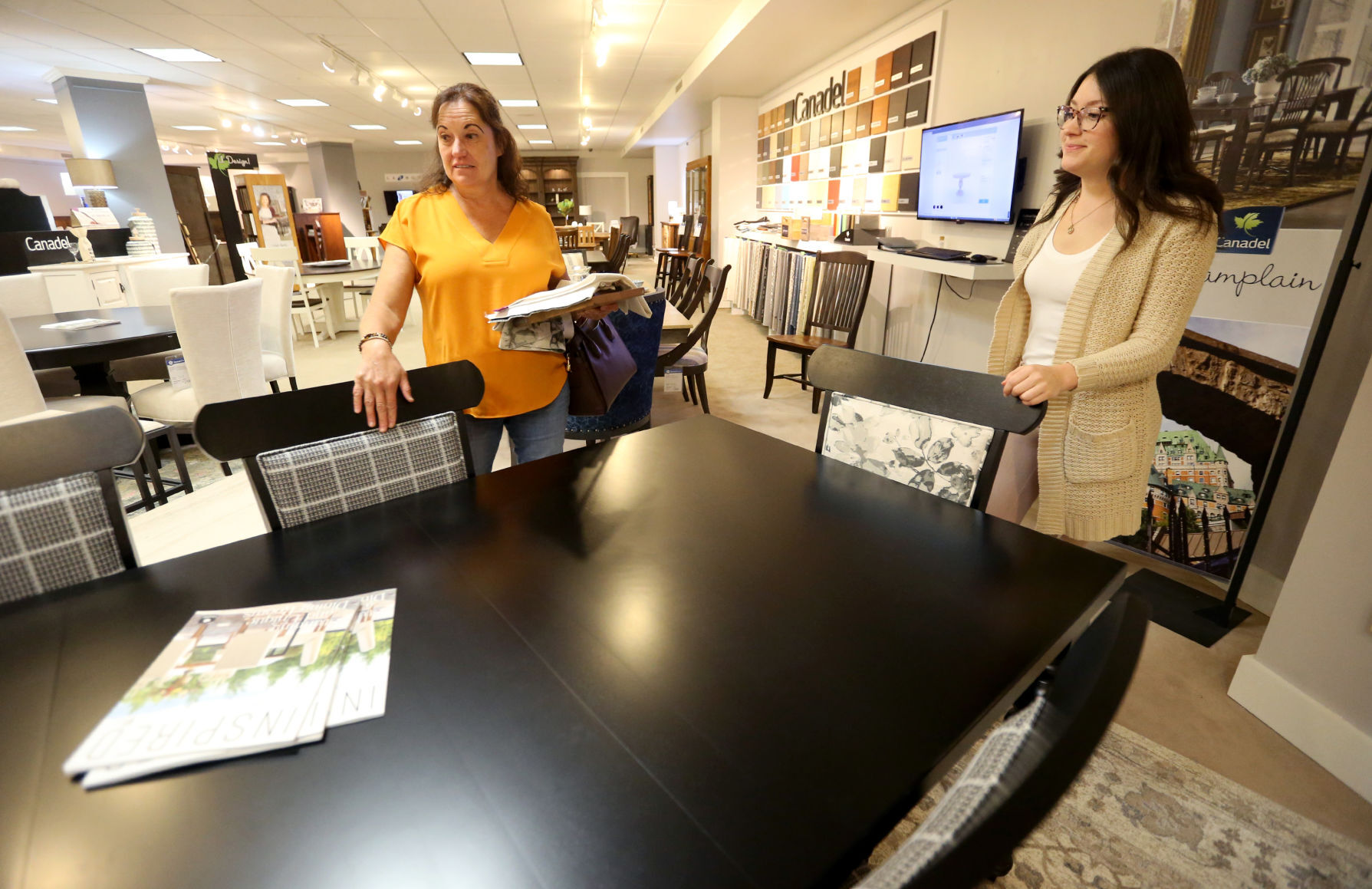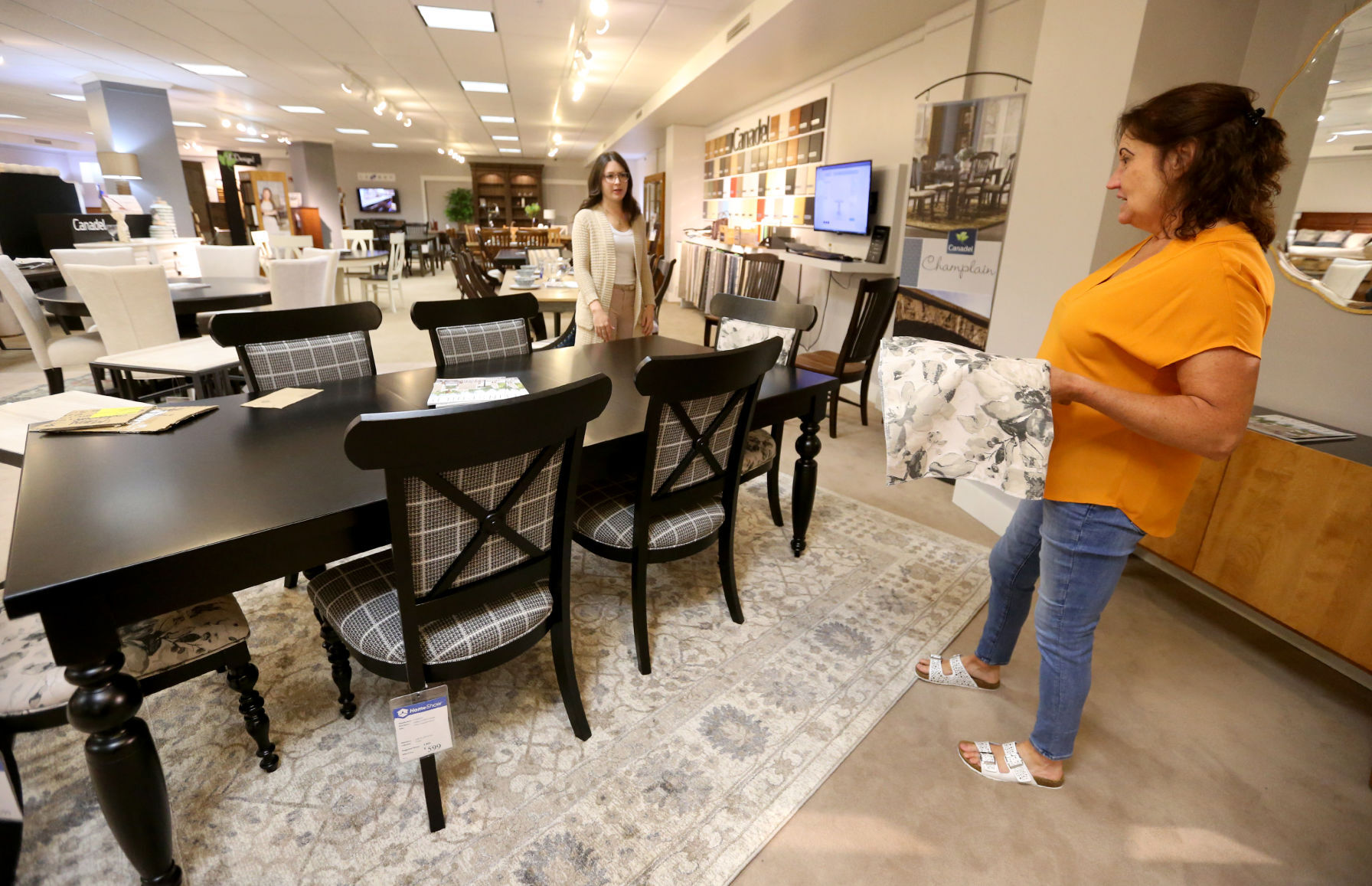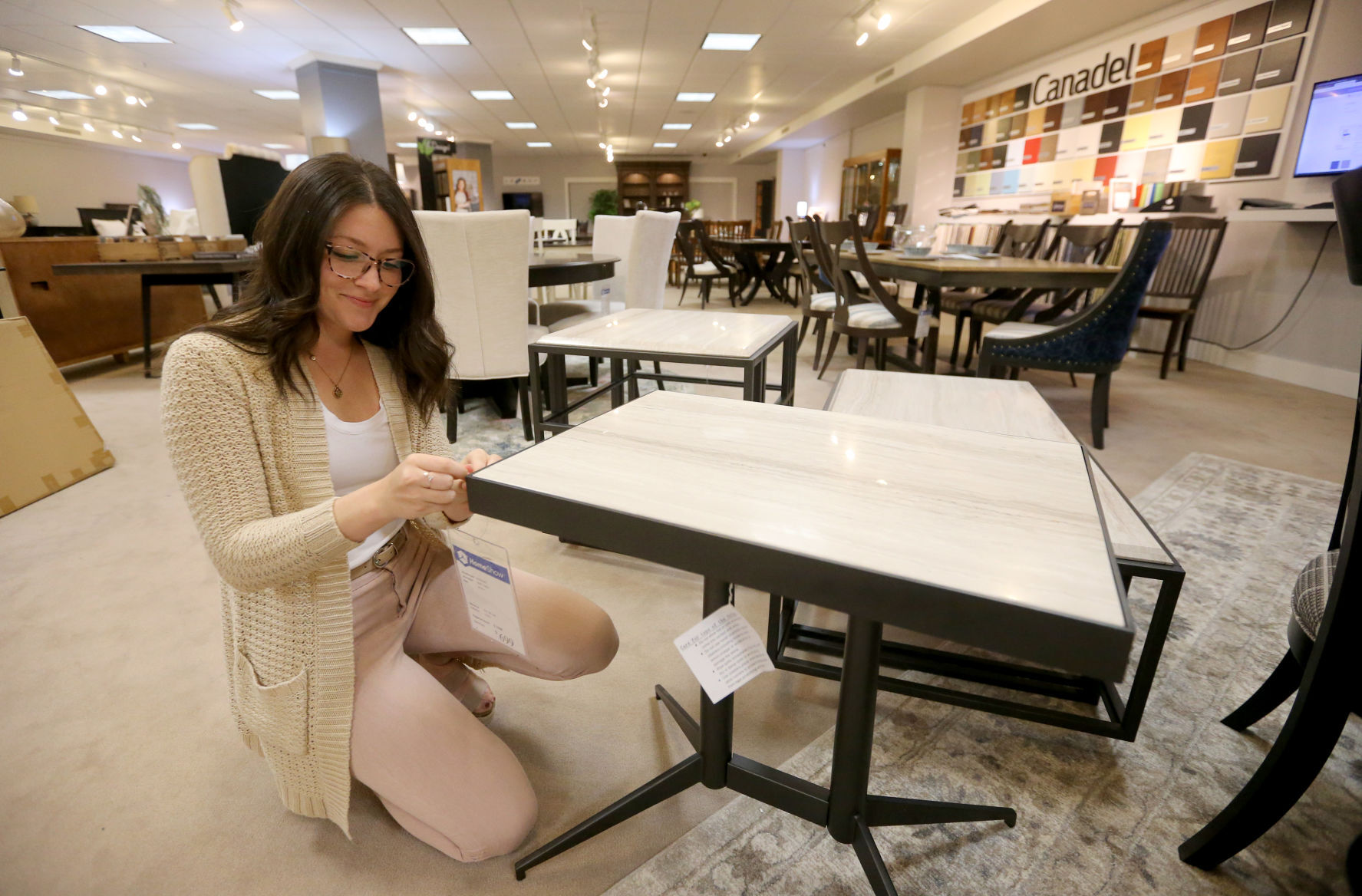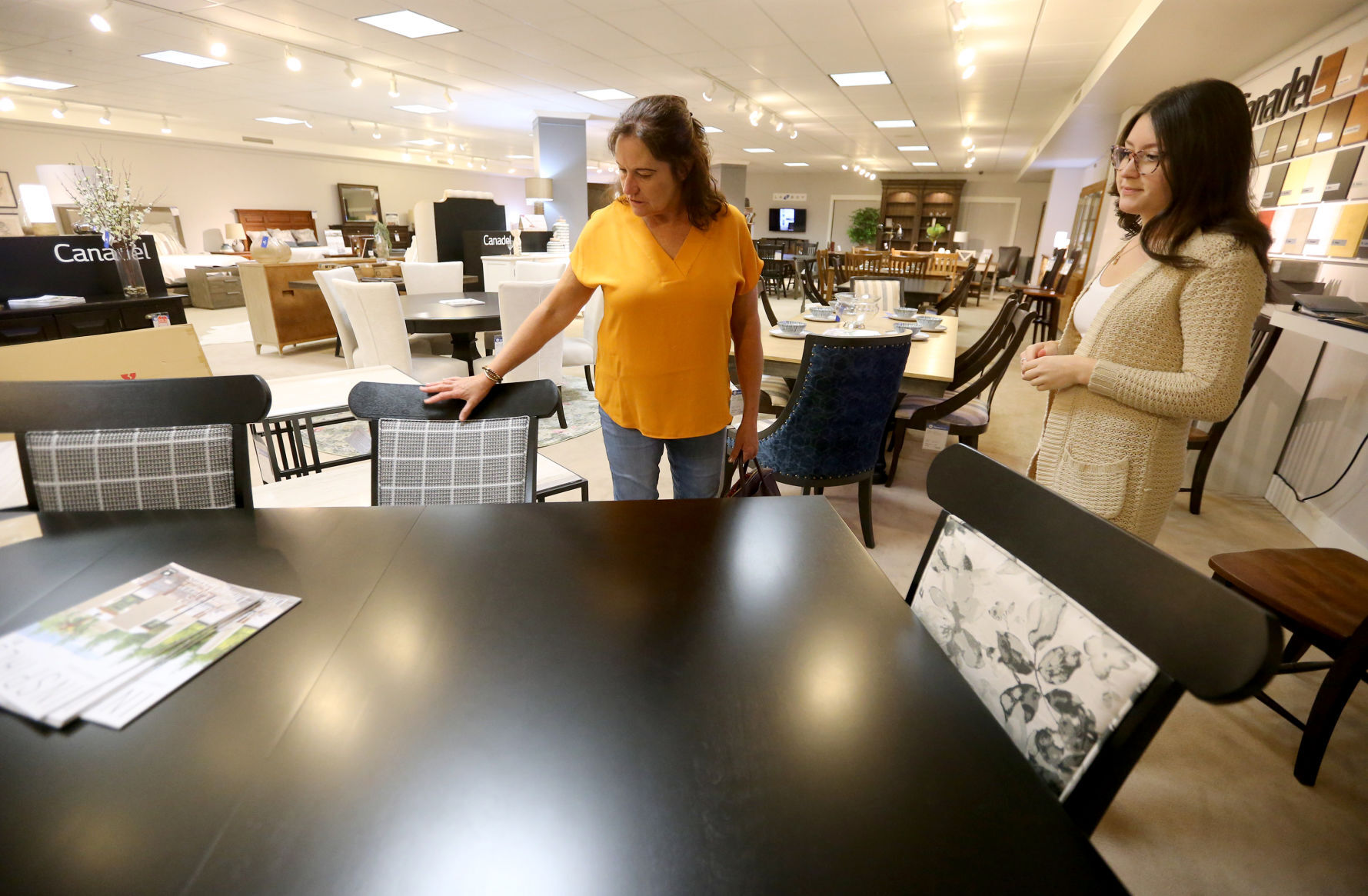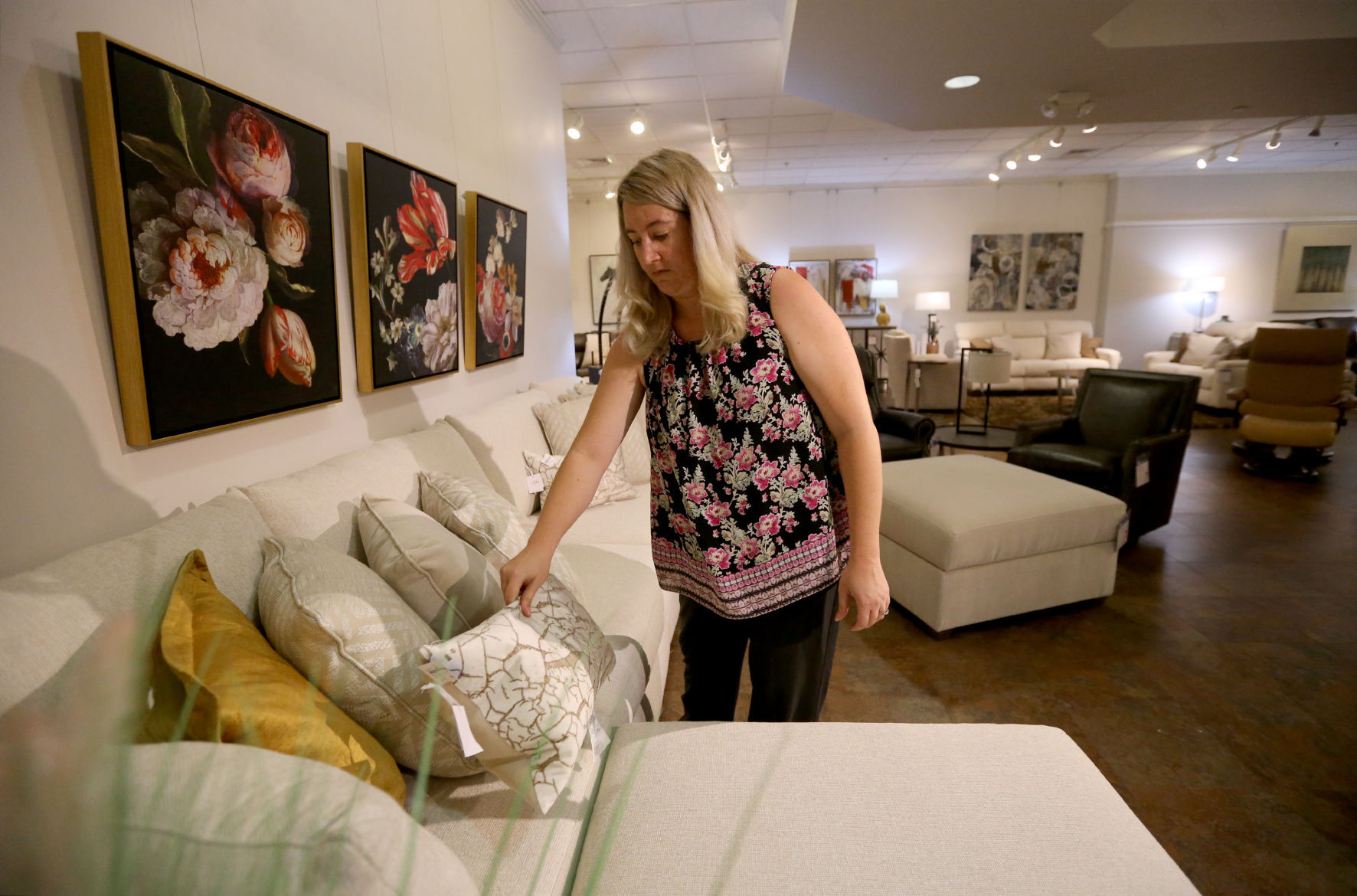In the late spring of 2020, Home+FloorShow reopened its Dubuque store on the heels of a mandated, seven-week closure prompted by the COVID-19 pandemic.
President Dick Gregory said it didn’t take long to realize the industry’s dynamics had changed in a major way.
“We saw demand start to explode,” he recalled. “People were home, and they were receiving stimulus checks. They couldn’t travel or dine out, so they were focusing on improving their home instead.”
The surge in demand was accompanied by another emerging trend, however.
Gregory and others in the furniture business quickly realized that major supply-chain issues were taking shape, making it increasingly difficult to meet growing demand.
Shortages of raw materials slowed efforts to manufacture new furniture. And even when the proper components were available, reduced capacity at plants dramatically reduced productivity.
Similarly, widespread labor shortages brought on by COVID-19 affected efforts to transport finished products, impacting everything from overseas shipping to the trucking industry.
“The issues were truly 360 degrees in terms of sourcing the product,” Gregory said. “Every touch point was slowing the product down. Products would move, but they were moving much, much slower.”
More than one year later, little has changed: Consumer demand for furniture remains high, and supply-chain issues persist.
Mark Jones, store manager at Slumberland Furniture in Dubuque, said “lead times” — the period between when an order is placed and when it is ready for the customer — have reached “unprecedented” levels.
“In the past, six to eight weeks was considered to be on the long end (for a lead time),” Jones said. “Now, it could be as long as 10 to 12 months.”
Gregory said he’s seen a slight decrease in lead times in recent months, although that appears to be the exception rather than the rule.
Frustrations in the industry reached a fever pitch this week when the North American Home Furnishings Association sent a letter to President Joe Biden. The correspondence detailed ongoing supply chain concerns and asked the president for assistance.
“Broken links in our supply chain are hurting all of our businesses, negatively impacting consumer prices and slowing down our recovering economy,” the letter stated.
It noted that consumers are facing both “massive delays” and rising prices. It also said many industry employees, who rely on commissions, are being forced to wait months before receiving pay for their sales, which aren’t finalized until a finished product arrives in store.
Jones acknowledged that this phenomenon is weighing on many salespeople.
“A salesperson could sell something today and, conceivably, not be paid on it until next year in May,” he said.
The impacts of the current situation extend beyond area retailers.
Furniture manufacturer Flexsteel, which has its corporate headquarters in Dubuque, has complained of supply-chain issues throughout the pandemic. Company officials did not respond to a request for comment for this story.
In its most-recent quarterly earnings report, the company noted that net sales increased 19.8% compared to the same quarter in the previous year. But officials lamented that “global supply issues remain a significant near-term challenge.”
Specifically, Flexsteel leaders noted that material and labor shortages have hindered efforts to ramp up manufacturing capacity. And shortages in ocean containers and key materials have led to “unprecedented cost inflation,” the report noted.
Amid the unique circumstances, Home+FloorShow has sought to provide clarity to its customers
Gregory noted that the company started a blog on its website to explain the supply-chain issues to clients. Staff also aims to stay in close contact with clients who are waiting on arrivals.
“We’re working very hard to communicate with customers,” Gregory said. “It can be hard. Sometimes the information we get (about arrival time) is only a guess.”
Consumers also can take some steps to avoid delays.
Jones emphasized that most retailers have some items that are immediately available and in stock. Lengthy delays ensue when customers get “selective,” coveting a specific brand or ordering custom furniture, he explained.
While current challenges are well-documented, immediate solutions are difficult to identify.
Industry leaders once believed supply-chain issues would be short-lived. However, the climate likely won’t be changing any time soon.
“The lead times now are definitely the longest they’ve been, and frankly, it is getting worse in many cases, not better,” Jones said.
He believes that delays have largely been driven by demand.
“The only thing that will fix this issue is a decrease in demand, and that’s the last thing I want to see happen,” Jones said.


